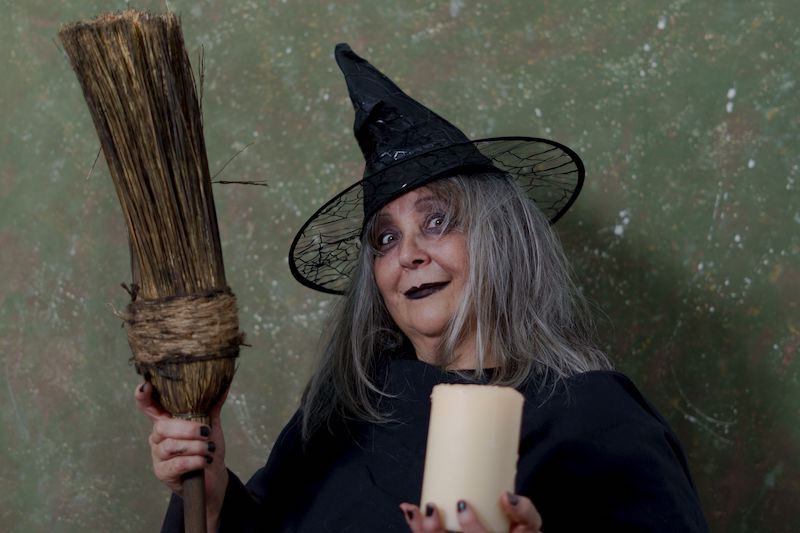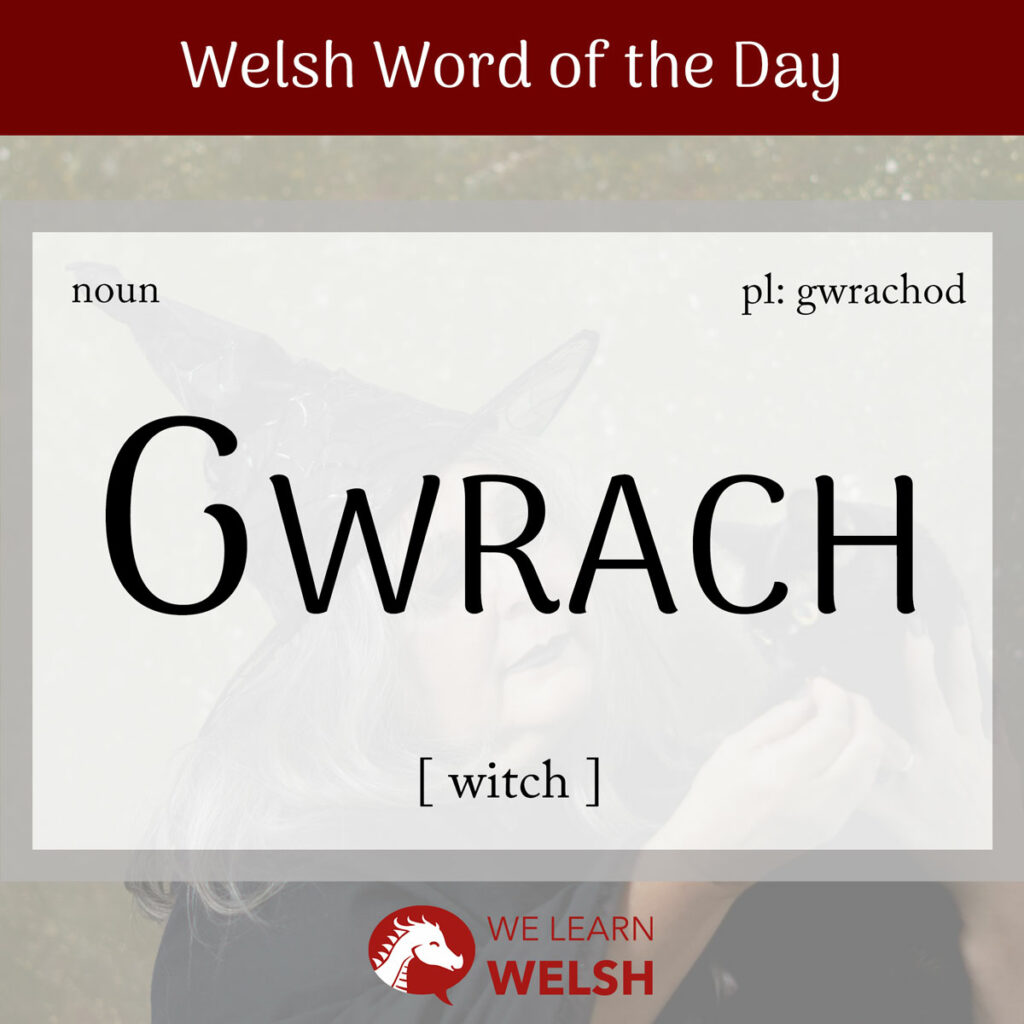In modern Welsh, the most commonly used word for witch is probably gwrach. Its plural is gwrachod.
gwrach
witch
The etymology of gwrach is uncertain. It seems to come from the Celtic *urakka, but prior to that, the derivation is unclear. An interesting comparison is the word gwraig, which means wife or sometimes woman, and may have evolved from the same root.
Historically, gwrach would have been more accurately translated as hag or crone, and for witch, one could use dewines (the feminine form of dewin, wizard) or rheibes. However, today it’s common to use gwrach to mean witch.
The synonyms don’t stop there. For witch, you could also use swynwraig (literally: spellwife), dewinwraig, witsh, or gwiddan, which is a fascinating word that can mean anything from witch, to nymph, to giantess – basically any female magical creature. And it’s evolved from the same root as the word gwyddoniaeth, which means science!
For hag, you could use ellylles, which is a feminine form of the word ellyll, meaning goblin, or generally referring to various nastly supernatural creatures. There is also an occasionally used Southern slang word, cleirchen, for a very elderly woman. If you just want to say old woman without insulting anyone, you can say hen wraig.
Here’s how gwrach undergoes mutation:
Soft mutation
wrach
Nasal mutation
ngwrach
Aspirate mutation
N/A
As it refers to women, gwrach is of course a feminine noun – this means that it mutates after the definite article y (the), so we say y wrach (the witch).
Roedd y wrach yr un mor hyll â‘i chwaer.
The witch was just as ugly as her sister.
Gwrachod (witches) are a key part of the llên gwerin (folklore) of many countries. Although the details differ, they are often portrayed as flying through the air on coesau ysgubau (broomsticks), casting swynion (spells), and keeping pets that help them with their magic such as cathod (cats) and llyffaint (frogs/toads). These pets were often thought to be demons, called dyfyn-ysbrydion (summoned spirit, familiar).

In Britain a few hundred years ago people had a strong belief in witches, and were very scared of them. Sadly, this led to the phenomenon of helfeydd dewiniaid (witch hunts), in which many innocent people were executed on suspicion of committing dewiniaeth (sorcery) or placing melltithion (curses).
Today the popular belief in hud a lledrith (magic) is not as strong, meaning that the concept of witches has instead become exciting or amusing to most people. There are plenty of popular films about gwrachod, whether they’re frightening ffilmiau arswyd (horror films) or quirky comedïau rhamant (romantic comedies). Gwrachod are also popular gwisgoedd (costumes) for Nos Galan Gaeaf (Halloween).
Mae’r wrach wedi rheibio’r plentyn.
The witch has cast a spell on the child.
In Welsh, the equivalent of the English phrase wishful thinking is breuddwyd gwrach (a witches’ dream) or coel gwrach (a witches’ belief). You might even come across the quirky phrase coel gwrach ar ôl bwyta uwd (what a witch believes after eating porridge)! Along similar lines, chwedl gwrach (a hag’s fable) means an old wives’ tale.
Sometimes, gwrach is used metaphorically to refer to anything that is disgusting or ugly. The most common example of this in everyday usage is probably the term gwrach y lludw for woodlouse. Lludw means ash or embers, and historically, gwrach y coed (the witch of the wood) has also been used to mean woodlouse. Gwrach y lludw is actually the most common translation of woodlouse in Welsh, but you can also use pryf lludw (ash insect) or mochyn y coed (the wood pig) if you feel sorry for poor old gwrachod.
Dwi’n mynd i wisgo fel gwrach.
I’m going to dress up as a witch.
The most famous dewines (sorceress) in chwedloniaeth Cymraeg (Welsh mythology) has got to be Ceridwen. Ceridwen had two children, a beautiful daughter Creirwy and an ugly son Morfran. Because Morfran was so hyll (hideous), Ceridwen wanted him to be wise, so she boiled perlysiau (herbs), intending to create a potion that would grant him the gift of deallusrwydd (intelligence) and awen (poetic inspiration).
She hired a gwas (boy-servant) called Gwion Bach (little Gwion) to tend the crochan (cauldron), but he licked his finger after dipping it into the mixture, thus gaining the gifts himself. So, Ceridwen chased after him, and each time he used his new magic powers to trawsffurfio (transform) into an animal to get away, she would turn herself into the predator of that animal.
Eventually, she managed to catch and eat him when he became a grawn (seed) and she became a iâr (hen). Because of the magic protection of the potion, instead of dying, he became her unborn child. She abandoned him when he was born, and he was found and raised by a prince. He later grew to become the famous bardd (poet) Taliesin. Chwedloniaeth Cymraeg is definitely weird and wonderful.

